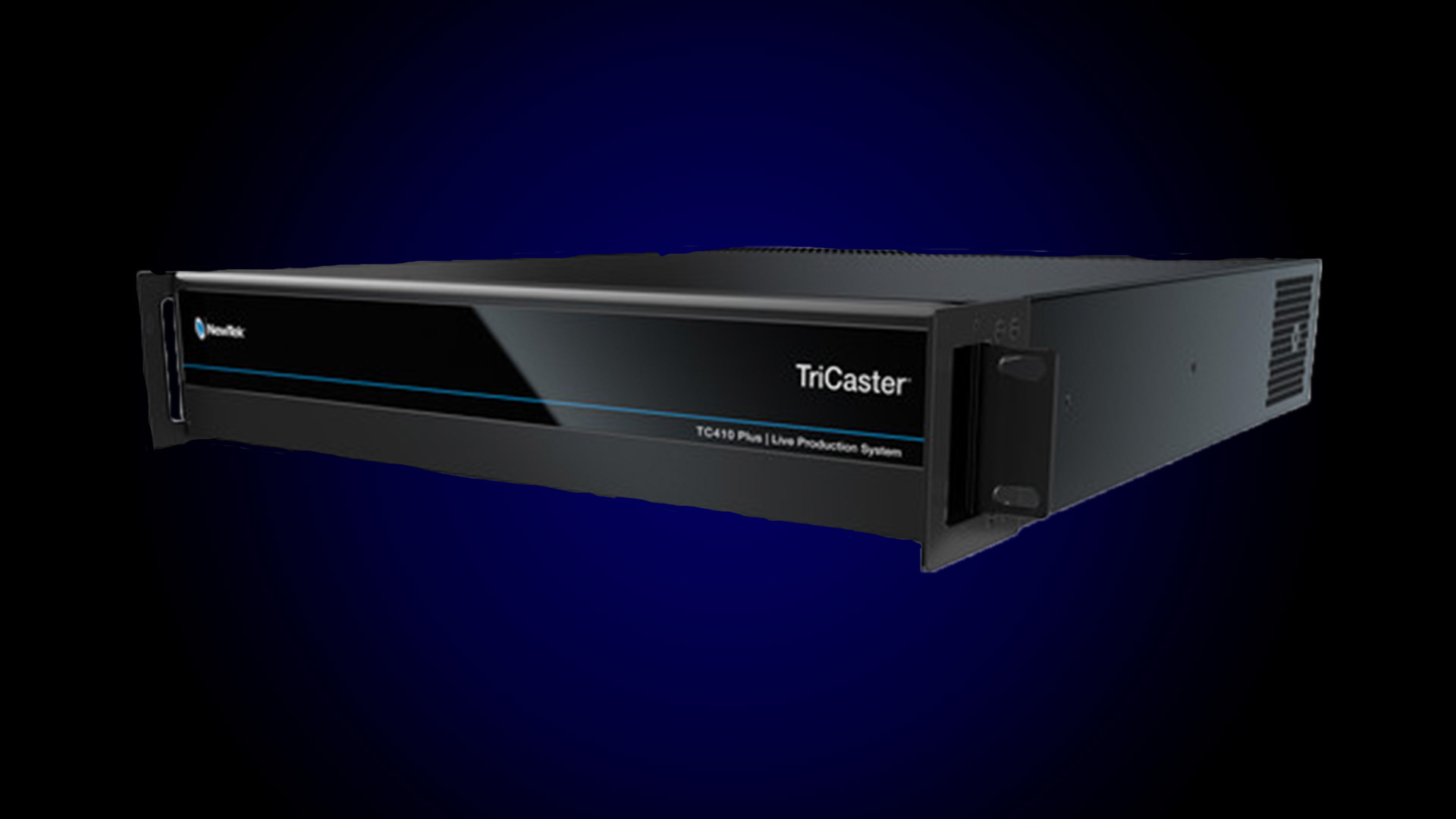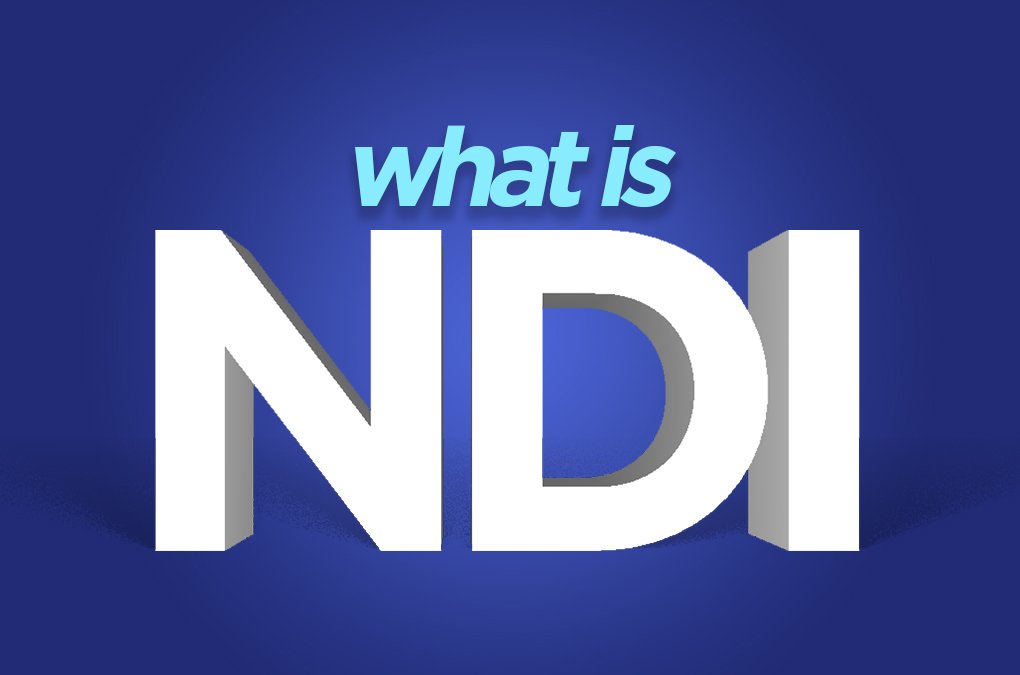Which Tricaster Switcher Should You Get When Entering the World of High-Level, Professional Live Streaming?
The term ‘live-streaming’ used to be synonymous with small-scale, social media content creators and YouTube gaming channels. However, in recent years, the term is now almost as popular as broadcast TV.
Why?
Because technology has made it accessible to anyone!
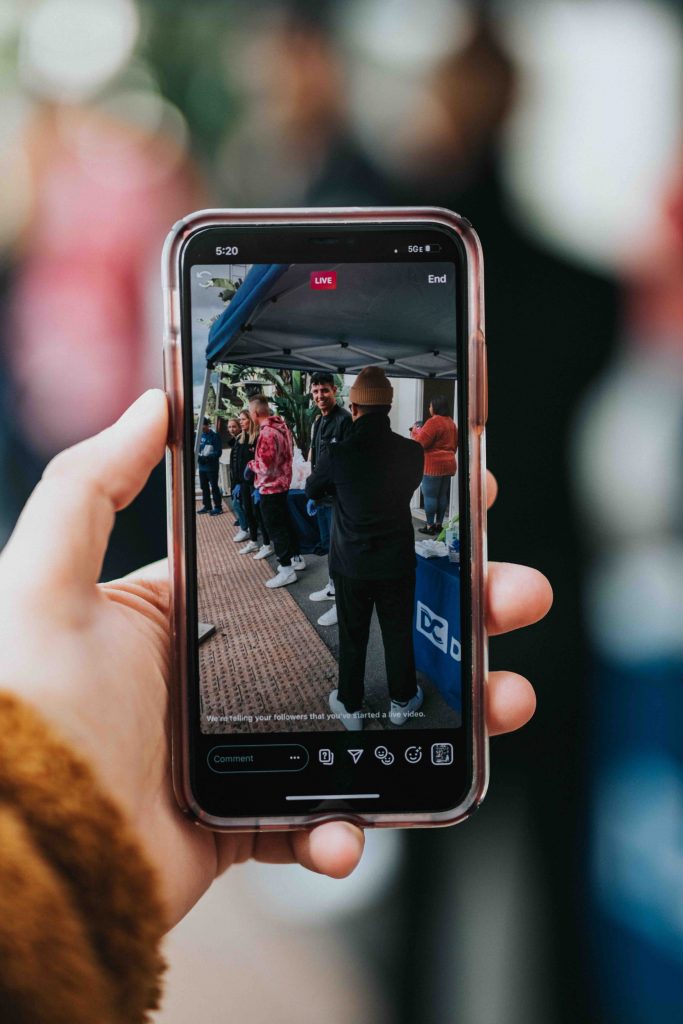
Not only has the technology you need to make it happen improved, and reduced in cost but the way in which your stream is delivered and the quality that can be achieved, has also improved massively.
Even as close as 4-5 years ago the thought of being able to mix a multi-camera live performance and have it broadcast, not only on TV but to multiple platforms on the internet was almost unthinkable. The setup you needed and the internet capabilities would have been too much for most.
Now, however, almost any live scenario you can think of can be mixed, recorded, and distributed all at the same time, to any destination you choose, from anywhere in the world.
How do I know what I’m talking about? Head to the DigiProTips Experience and Background page to find out how I’ve built up my knowledge over a career spanning feature film, broadcast TV and digital content production.
What do You Really Need for Live Streaming?
Well, that completely depends on your end destination and the audience you are aiming to serve.
A studio that is live-streaming a concert will need significantly more options and power in their setup compared to someone who is vision mixing an internal conference, gameplay, a two-person interview, or podcast.
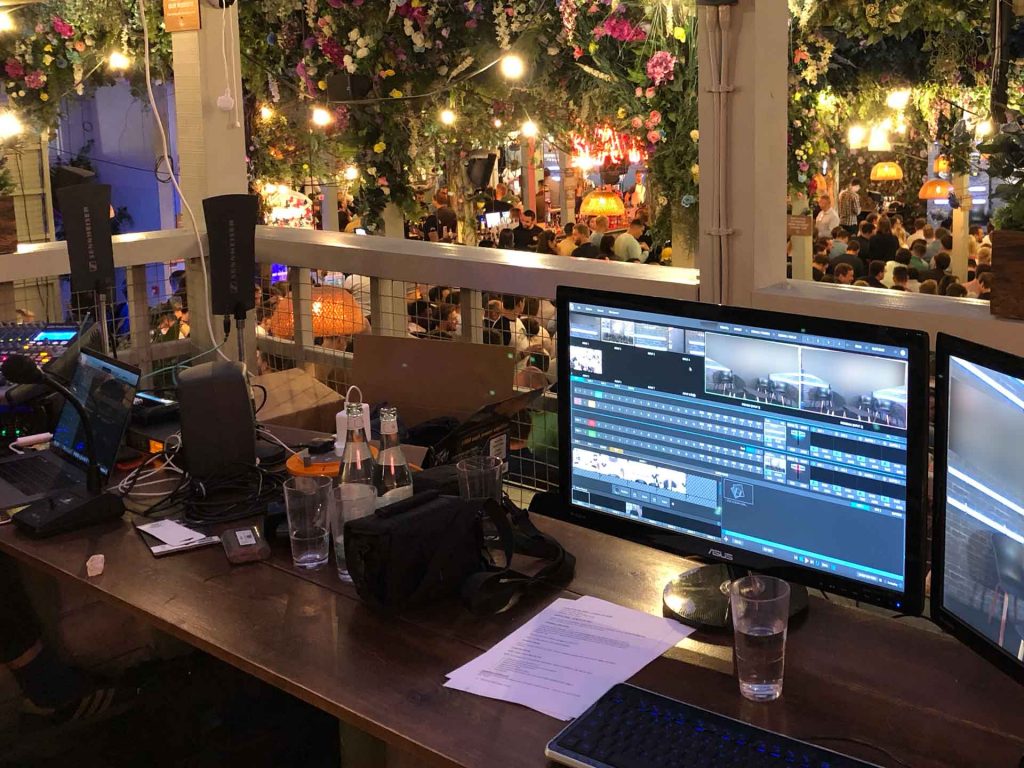
But even with that said there are still some fundamentals at the base of it all.
You need cameras, mics, lights, an audio desk, monitors (gallery and on set), data transmission cabling (SDI, HDMI, or NDI), and of course, you need your switcher and mixing desk.
The last one is what we are here to talk about today and more specifically, we’re here to talk about Tricaster switchers.
Why Tricaster Switchers?
I recently wrote an article on the best Blackmagic Design ATEM Mini to get and you may think it strange to follow up with an article based on Tricaster’s.
But to me, the uses for both are significantly different. ATEM Mini’s are for digital video professionals entering the world of vision mixing and producing smaller programming.
Tricasters are for digital video professionals who are looking for TV-quality video switching capabilities but for live-streaming.
There are of course other competitors to the Tricaster, such as Broadcast Pix, Wirecast & vMix but none of these, in my opinion, have everything that a Tricaster has to offer.
Tricasters are built by NewTek who also came up with one of my most talked about software protocols, NDI. NewTek has been building Tricasters for digital video switching for well over a decade and the experience they have is shown in every product they make.
NewTek has revolutionized the way we produce digital video and in recent years, revolutionized the way it is delivered too. With NDI enabling end-to-end IP workflow with high-quality, low-latency streaming to any platform or broadcast anywhere in the world.
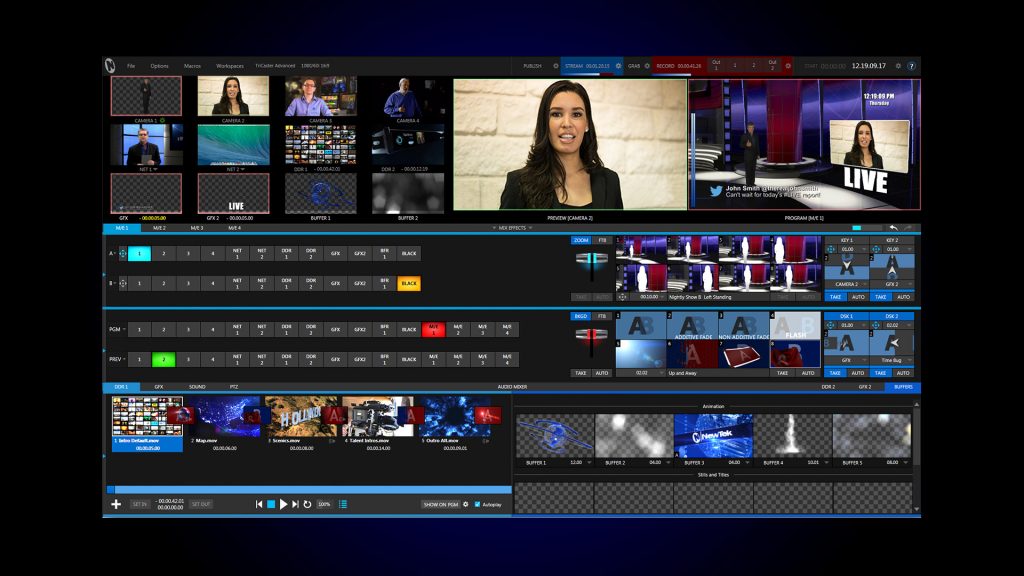
As well as NDI offering Tricaster’s the potential to have unlimited sources at their fingertips you also get the fantastic DDRs, Graphics Buffers, Downstream Keyers, Macro commands, PTZ control, easy to see and use multiview and numerous recording/streaming options.
Switching & Compositing
The keyers are also a fantastic addition, enabling you to add overlays, lower-thirds, or effects at the touch of a button. You get 4 keyers that are essentially stackable, so you can use all 4 to create one graphic or have 4 individual graphics.
Something that is often overlooked with video switchers is the ability to use a source within another source. With Tricaster switchers you have banks full of what they call Mix Effects (M/Es). With mix effects, you can take any element, source, or graphic you choose and combine it with another. This is great for picture-in-picture use or effectively adding more options to your keyers.
Skype Integration
A large majority of streamed programming on social media (and in broadcast TV too) use phone/video interviews with correspondents in remote locations or to speak with sources/experts on a given subject. With Tricasters you don’t have to worry about integrating external Skype calls into your programming, you already get 2 Skype channels inside of the Tricaster software. That means you can connect two calls and switch between them and the studio or have split-screen whenever and however you like.
Multichannel Audio Mixing
All Tricaster switchers come with a software-driven audio mixer. That means you have finite control over each individual source’s audio levels from within the software. With it, you can create mixminus’ and solo individual audio channels to create whatever setup you like.
It’s worth mentioning that you can also use an external audio desk and route the desk’s audio into the Tricaster but you won’t have control over each mic connected to your desk from within the Tricaster itself, just the main output.
I used an external desk in my productions because the recordings were for multi-purpose output. Each recording was a podcast and live social video program in its own right. So having an audio engineer with complete control on a desk that was routed to my vision mixer was essential for that particular setup.
Real-time Monitoring
Because a Tricaster is not just hardware, like an ATEM vision mixer might be, it is also software-driven, meaning that when using the software you have multiview, real-time, monitoring right within the interface.
In fact, you don’t just get the program and preview monitoring, every single source coming into your Tricaster has its own live monitor too. As a vision mixer/director this is an incredibly valuable tool to have in front of you.
Delivery & Streaming
As we are talking about the best video switcher for live streaming to social platforms it’s definitely worth noting that not only do Tricasters have most streaming platforms, and the necessary encoding profiles already loaded ready to stream straight from the system but it can also stream out in a variety of different aspect ratios too.
We know that not all video these days is widescreen 16×9 and NewTek have got you covered on that front too. Within the project setup of your Tricaster you can choose the aspect ratio you want to use, wide, square or portrait. Meaning you can stream directly to your applicable social platform in exactly the right ratio.
Automation & Telepromtpter
If your talent is using a teleprompter to read from then Tricaster also takes that into account too and by using Live Story Creator you can add a .docx file to your Tricaster and run the prompter directly from there.
Software Controls
If you have directors who like to be on the set floor or you want to set things up to be semi-automated and run things remotely, then Tricaster’s have the ability to be controlled through software controls on mobile devices.
You can configure your software controls to your liking and they can run any piece of the vision mixing workflow that you would like. If you are used to working with macro commands this could be incredibly useful.
Real-Time Graphic with Adobe
With NDI and Adobe there are two methods of integrating real-time graphics into your production.
You can import Adobe Photoshop files to use as 2D static elements with alpha or you can use Adobe After Effects to create custom animations and integrate it using NewTek LiveGraphics.
The second option and one that I much prefer because, well, it’s free, is to use the NDI for Adobe Creative Cloud plugin from the free NDI Tools pack at NDI.tv. Once this is installed you can send your Premiere Pro or After Effects timeline directly to your network as an NDI source with alpha embedded too.
That means you can pull in that source and use it within an M/E or a keyer or as a source on its own. The only disadvantage to this method is that it does use up one of your source channels as opposed to adding the graphics to your buffer or DDRs.
For more on how you can use NDI to stream out your Premiere Pro or After Effects timelines and for more on NDI in general, then check out my ebook here. You can also sign up for the newsletter to get the first four chapters for free.
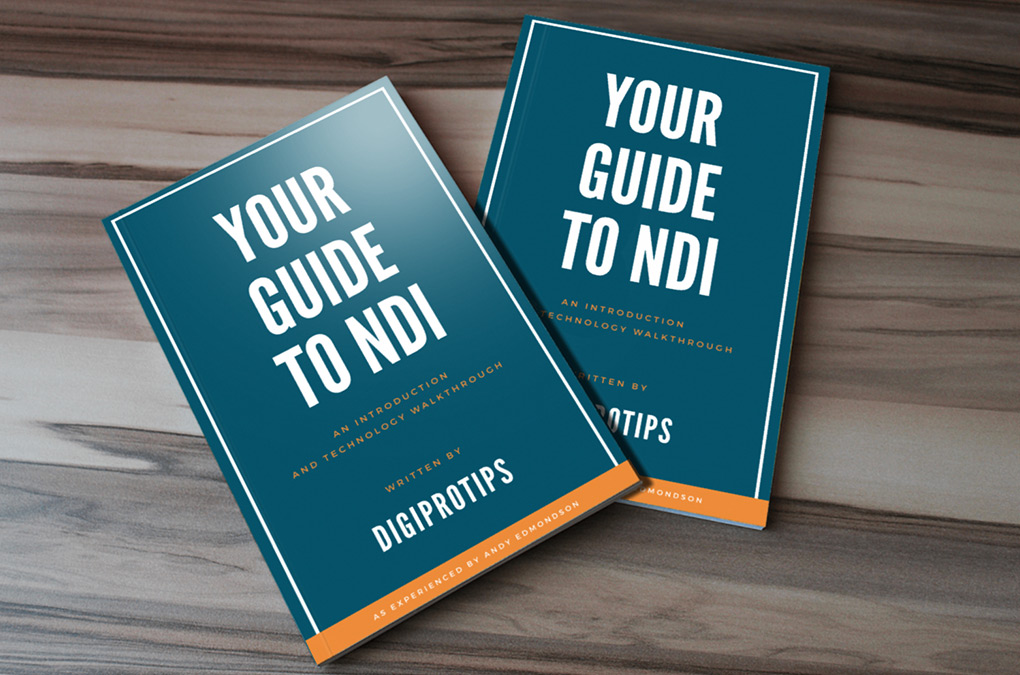
Live Virtual Sets
An interesting in-built feature of Tricasters is the ability to use virtual sets.
Tricasters have a great live chromakey feature that means if you are shooting against a blue or green screen then you could do away with a physical set and have your talent placed inside a virtual set.
These sets can be purchased or created and imported. This essentially lets you have your talent put into any environment you can think of.
I have mixed feelings about the usability of them and some of the stock virtual sets could do with updating to be more ‘realistic’ but I have used the feature successfully with a custom-built virtual set before.
Built-in Video Players (DDR’s)
With all Tricasters you get 2 DDR’s (media players) using the Tricaster software, that you can queue playlists of VTs in. For me, these have been invaluable when you are running a fast-paced sports program with multiple VTs and cameras to be switching between.
Recording and Replay
All of these attributes combine to create a fully formed production switcher capable of running television broadcasts. But we’re not talking about broadcast TV here, we’re talking about video switchers for streaming.
So, Why Would You Need All of This For Streaming?
Because streaming is becoming as complex and as high-quality as broadcast TV these days.
In 2017 I was vision mixing broadcast TV-level programming through social media live streaming platforms. These days things have improved considerably in many areas and having the functions of a TV vision mixer are as necessary for streaming as they are in broadcast.
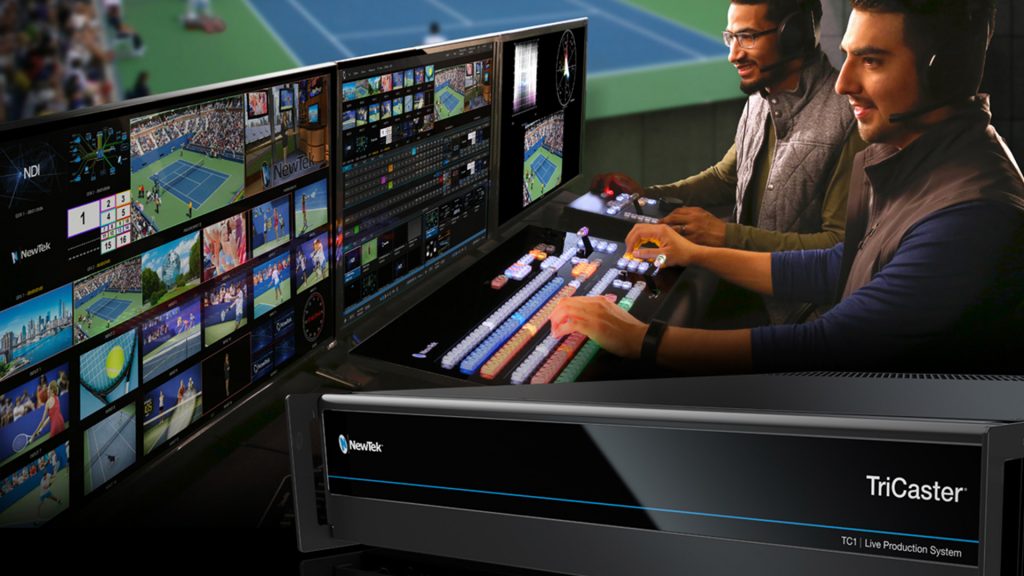
I wouldn’t have been able to run the sports-entertainment program I did a few years ago on an ATEM Mini and I certainly wouldn’t have been able to do it through software-only switchers, such as Wirecast or OBS.
I needed all of the functionality I mentioned above to be able to put together the high-level of production necessary.
So, Which Tricaster Video Switcher Do I Need for Live Streaming?
Now that you know what Tricaster’s are capable of and why I recommend them so highly, it’s time to look at the different models and what they can offer.
DISCLAIMER: This post may contain affiliate links. We make a small commission if you buy the products from these links (at no extra cost to you). As an Amazon Associate, I earn from qualifying purchases. But we only recommend products we would use ourselves. For more information, click here to see our disclosures.
Tricaster Mini 4K
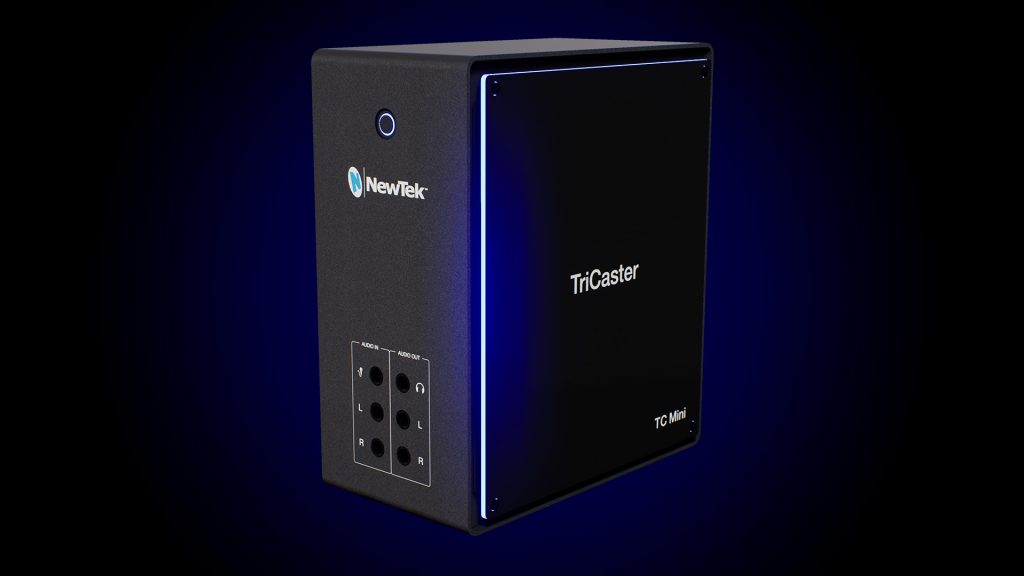
This is the entry-level of the Tricaster products and this unit has been overhauled from its three predecessors.
This unit is purely an NDI switcher, there are no physical SDI or HDMI ports on the unit like there used to be. Instead, you get more Ethernet ports on the rear of the unit to add more NDI sources connected via Ethernet, such as PTZ cameras and NDI-converted SDI or HDMI signals.
The physical unit itself is small enough to be desktop mounted (as I have done many times before) and therefore, also portable.
I have used the previous model, the Mini HD-4 since 2015 and have taken it around the country as a fly-away kit for live switching on location.
If you are wanting broadcast-level production capabilities with the minimal amount of kit, expense and don’t need to contend with physically connected cameras or sources then you need look no further than the Tricaster Mini 4K.
Not only do you have the full functionality of the Tricaster software (which can be extended further Tricaster Advanced Edition) but you also don’t have to worry about a mess of cabling and rack mounting this unit. It’s also completely 4K/UHD equipped so you are future-proofed for years to come (certainly until you can stream 6 or 8K to streaming platforms).
What I do recommend with all of the Tricaster’s below, is for you to purchase the corresponding Control Surface. This gives you access to all of the functions inside the Tricaster software underneath your fingertips.
Trying to vision mix using a mouse and keyboard is of course possible but it is not efficient. DigiProTips is all about working smarter and not harder, by using the control surface you will be able to confidently and efficiently switch between inputs and command all manner of macros, transitions, cameras etc with the press of a button. It becomes like playing a piano and in the end, it becomes second nature. It just takes a little practice.
There are two packages available when purchasing the Tricaster Mini 4K, you can get the unit and two NewTek Spark NDI converters for around $7,995.
This is a great option for streamers who want to use NDI but have SDI or HDMI connected cameras and want to use them as NDI sources.
Then there is the above plus the addition of a control surface for around $9,995. This is a saving of $500 when you consider the control surface on its own is $2,495.
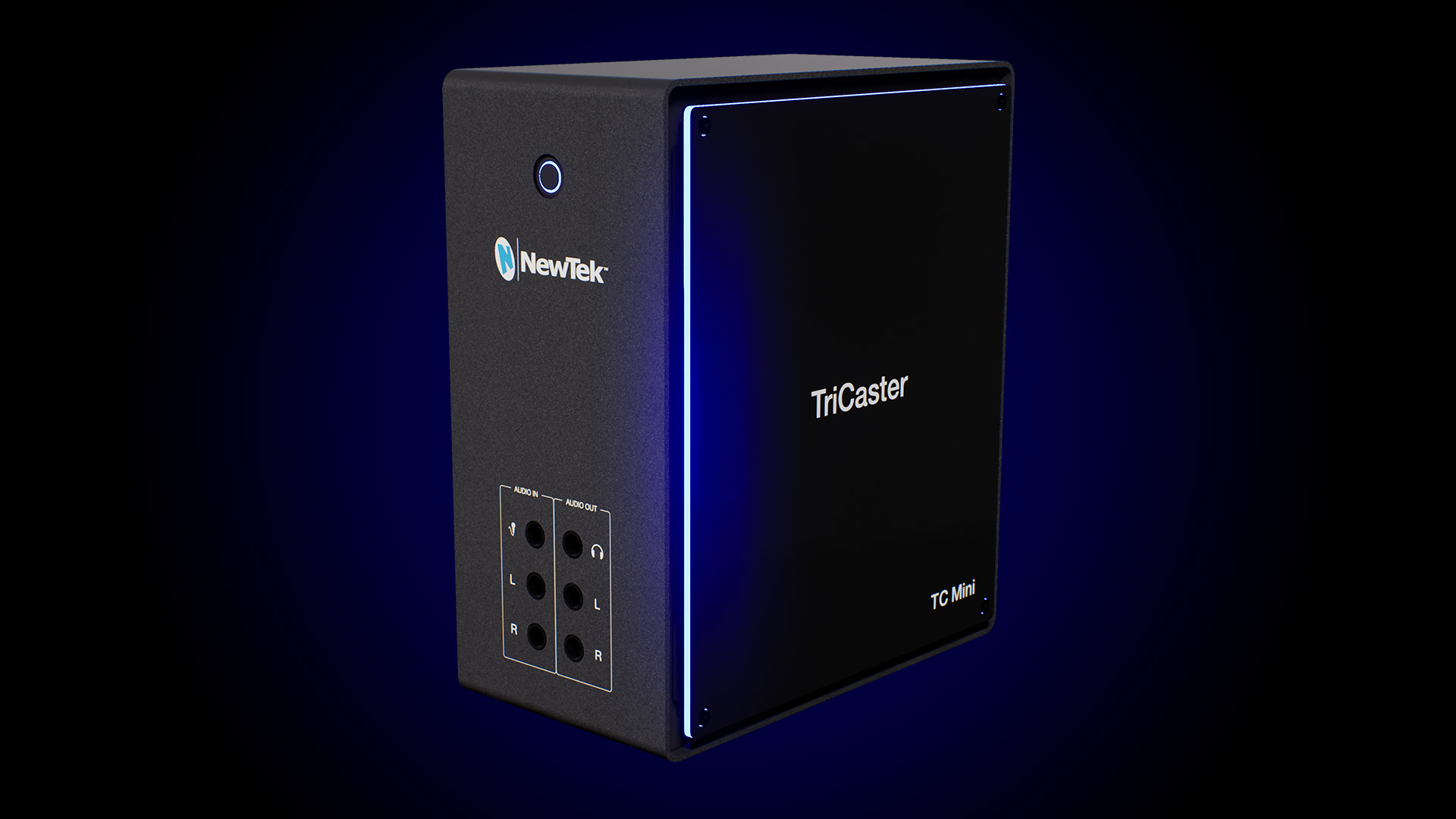
The TriCaster Mini from NewTek is a compact, all-in-one multimedia solution that allows you to simultaneously broadcast, stream, and record live productions from virtually anywhere. Using the same intuitive and fully featured control software as the rest of the TriCaster professional line, the TriCaster Mini is suited for both new users and seasoned pros.
Tricaster TC410 Plus
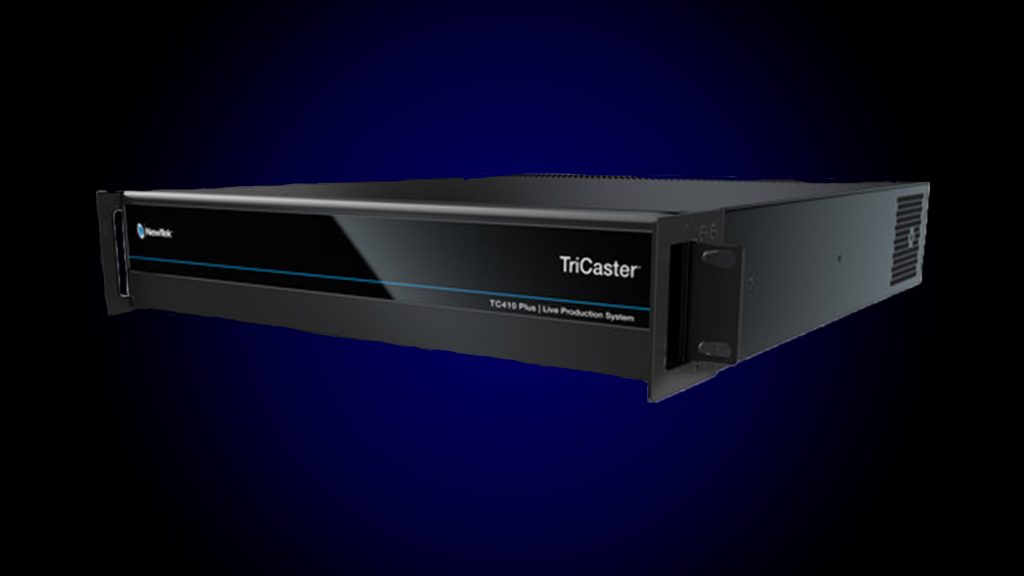
Next in the lineup of Tricaster’s is the TC410 Plus. This is the first in the rack-mounted format but it is still small enough to be used a portable live production switcher on location via a fly-away rhino/peli case.
The TC410 Plus, as with all the Tricaster’s, pushes hard on the NDI sources being the most flexible and abundant input option. However, the TC410 Plus does sport 4 HD-SDI inputs for physically connecting hardware to your Tricaster.
The TC410 Plus features all of the Tricaster abilities mentioned earlier in the article but has slightly more horsepower under the hood in terms of hardware. Whereas the Mini supports the ability to simultaneously record 4 outputs in the new NDI codec, the TC410 Plus can record 6 simultaneous outputs, 4 with the NewTek Quicktime codec and 2 using the streaming encoder for MP4 codec files.
The TC410 Plus also comes with 3TB of internal storage.
This unit is great for digital video professionals looking to enter broadcast-level vision mixing via streaming platforms but still have the need to connect physical studio cameras via SDI.
It’s worth pointing out here that these are HD-SDI connections, not 12G 4K SDI connections. So, for future-proofing your set up, this may not be the best option to take.
As with all the Tricaster’s from here on out, you will pay more for the more features and hardware it contains. With the TC410 Plus, the base model without control surface starts at around $9,995. To add on the control surface (again, highly recommended) you are looking at $14,995. The reason for the jump in control surface price is because the control surface for the TC410 Plus has many more features, in terms of buttons, than the Mini 4K has or would ever need to have.
TriCaster® TC410 Plus is an integrated video production system designed to create multi-platform productions live and on-demand. It is scaled for smaller racks and mobile units and gives you an end-to-end IP workflow from acquisition to delivery.
Tricaster TC1

The next video switcher for live streaming I’d like to talk about is the TC1. It is the Tricaster switcher that I used to produce the broadcast-level sports programming a few years back.
It is a fantastically powerful switcher that is capable of handling pretty much anything you throw at it. When I was working with the Tricaster Mini-HD4 back in the day, I could at times find that I would run out of RAM and it would either result in dropped frames or in the worst case, a crash/freeze.
I was obviously throwing too much at the lower spec system. Now, this was back in 2015/6 when tech specs for switchers were a lot less able to handle multiple visual elements at one time. Now, the Tricaster Mini 4K would be more than capable of handling what I was trying to do back then.
With the TC1 I never once had any issues, even when I had every memory bank full of media with 6 live camera sources, streaming out to two platforms and recording 4 high-quality MOVs all at the same time. As well as all of that, Tricaster switchers automatically and constantly output an NDI stream of your program to the network for any computer to view as well. So the TC1 was doing A LOT of work under the hood.
In terms of inputs, the TC1 is essentially a mix of the Mini 4K and the TC410 Plus. The TC1 can handle 16 4K NDI inputs in real-time and export/stream in 4K but for physical SDI inputs, it has 4 3G/HD-SDI inputs and a reciprocal 4 3G/HD-SDI outputs as well.
This means you get 4K vision mixing but only via NDI. If you want to connect cameras or sources to the TC1, they will be HD, not 4K. To connect your 4K cameras you would need to convert them to NDI first.
It’s the hardware specs that really bring the TC1 to life. Every single feature I mentioned above is available in the TC1 in real-time. Unlike the Mini 4K where you are restricted to recording capabilities and the number of mix effects, for example. The TC1 can live chroma key, play in alpha graphics from your network or DDR, have studio-grade Skype calls via integrated Skype TX software, utilize 4 downstream keyers, and much more, all at the same time.
You might be hard-pushed to ask the Mini 4K or TC410 Plus to do everything all at once.
If your production plans are extensive and exhaustive then for peace of mind the TC1 is the unit for you.
Because of the switchers’ ability to handle all of this, the price tag is also reflective of that. The unit by itself starts at $14,995 and to get it bundled with the corresponding control surface you are looking at $19,995.
That seems steep but the hardware and software you get for that investment will not let you down. When it comes to video switchers you really do get what you pay for.
Weigh up what your production level needs to be. If you need the level of production I did for live sports programming then you won’t go wrong with this video switcher.
Produce professional live and recorded content in SD, HD, or UHD 4K with the NewTek TriCaster TC1. Its 16 potential video sources can be used simultaneously, regardless of resolution. And with NewTek's Network Device Interface (NDI), many types of video sources can be connected directly via standard network infrastructure.
Tricaster 2 Elite

There is one more Tricaster to mention but in all honesty, it’s definitely overkill for live-streaming.
With the 2 Elite, NewTek has basically taken every feature they have up their sleeve in all previous models and boosted it by at least a factor of 2.
The 2 Elite is capable of handling 32 live sources all up to 60fps UHD. That’s input, for outputs it can simultaneously output 48 IP sources (HD sources only). For a full broadcast studio-level production setup with a control gallery needing many multiview monitors of inputs and outputs live at that moment, the 2 Elite can offer it.
For physical connections, you get a full 8 3G/HD-SDI connections to connect up to 8 cameras or physical sources to your production. You also get the same amount of SDI outputs too.
There’s not just 2 but 4 DDR’s in this vision mixer. On top of that you get 15 media buffers, comprised of 10 animation buffers and 5 graphic buffers.
Recording power is greatly increased with 4x1TB SSDs and split overall sources you have 32 available recording channels:
- 8 x configurable M/E channels for HD or 2 x for UHD
- 8 x physical SDI inputs
- 4 x DDR’s
- 2 x streaming encoders
- Support for growing file playback from DDR’s
- Instant Replay capability on each input
As I said though, this is more than likely going to be overkill for most streaming setups. With this much firepower under the hood, you’re looking at broadcast TV studio-level productions with this unit.
So, Which is the Best Video Switcher for Streaming?
I’m going to stand by my initial thoughts and go with the Trciaster Mini 4K.
Yes, it doesn’t have any physical inputs out outputs but I am a firm advocate of NDI and it’s my opinion that you don’t need physical connections anymore.
For most setups the Mini 4K is the ideal video switcher for streaming and by going IP based you don’t have to worry about cabling and routing.
With all of this being said, Tricasters are obviously a big investment, so make sure you know the complexity of your ideal setup first and make a judgment based on available budget rather than wants.
Whichever switcher you choose, have fun getting to know it, I know I certainly did!
DigiProTips.


